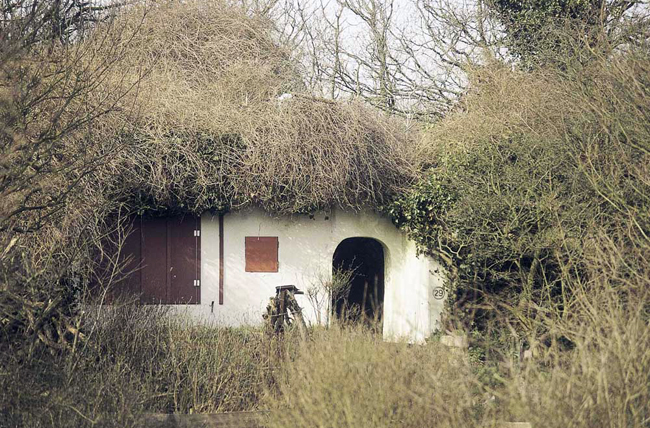|
Widerstandsnest 163 - Park Kostverloren |
Widerstandsnest 163 - Park Kostverloren
Kostverloren Park is located to the east of the Zandvoort city limits, between the railway, the golf course, and the Quarles van Uffordlaan (road). A remarkable symbiosis between reused fortification works and local plant and animal life can be witnessed in this park. The bowl-shaped dune park, once a part of the extensive property of the aristocratic Quarles van Ufford family, today measures about ten hectares (25 acres). In years past this area was a fertile potato-growing region, but the collection of drinking water for the city of Amsterdam has caused the groundwater to drop below agriculture-sustaining levels. Villas started to appear at the park’s edges at the beginning of the twentieth century, and the local tourist board has built a playground that includes an aviary, a monkey-house, and a rose garden. During the Second World War, the park proved a to be an ideal, well-sheltered and camouflaged location for a German garrison, and the site eventually included thirty-five small shelters, a washroom/toilet building and a horse stable. The structures were nestled in the dunes and were defended by seven Tobruks (concrete machine-gun emplacements) located along the perimeter. The layout of each of shelter was identical: a single room measuring 4 x 3.60 meters with a door and two small windows penetrating one wall. An additional wall built in front of the door and windows provided protection against bullets and shrapnel. |
|
- Maps
- Map section IJmuiden - Zandvoort
- Map section Zandvoort
- Map section Waterleidingduinen
- Map section Waterleidingduinen - Zuid
- Map section Zandvoort - Katwijk
- Map section De Zilk

-
legenda
 Extant German emplacements
Extant German emplacements
 Sea front
Sea front
 German emplacements no longer present
German emplacements no longer present
 Anti-tank wall still present
Anti-tank wall still present
 Demolition zone
Demolition zone
 Land front no longer present
Land front no longer present
 Land front still visible
Land front still visible
- punten op de kaart


The construction of coastal defenses resulted in large-scale urban demolition along the seaside boulevard. In Zandvoort alone, 648 buildings were razed and 7,738 residents were forced to evacuate.
Zandvoort was rebuilt after the war but Haarlem architect Friedhoff’s ambitious plans for a classy new resort were never realized. What did get built was the Bouwes Palace Hotel. In spite of its towering height, it is regarded as a sorry architectural low point, remarkable only for its lack of character and imagination. The old village was partly restored. The defense works, mostly located in the dunes, were left undisturbed if they did not interfere with reconstruction efforts. The 1953 flooding disaster triggered the removal of bunkers located directly on the beach.

W.N. 163 - Park Kostverloren
The anti-tank wall along the eastern edge of Stützpunktgruppe Zandvoort
Widerstandsnest 143c - Headquarters of the Festung Pionier Stab
Widerstandsnest 151
W.N. 161 / W.N. 162
Walzkörpersperre






